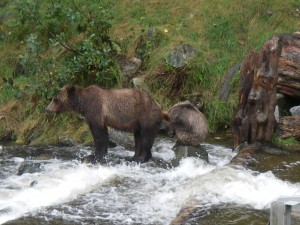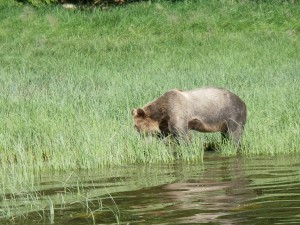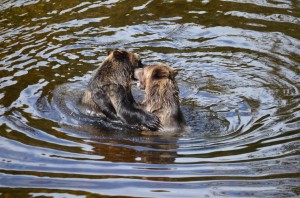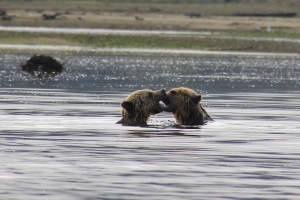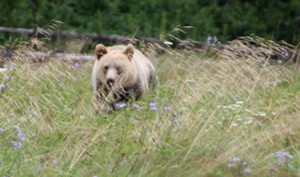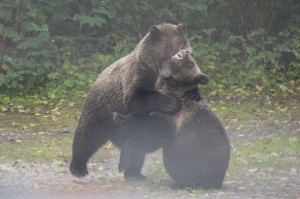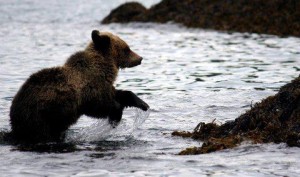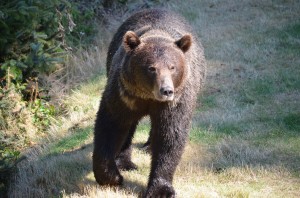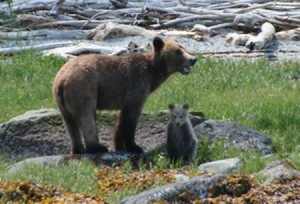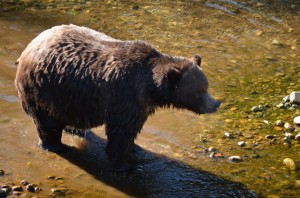
This is a grizzly bear destined to have a good hibernation. However according to the Natural History Museum grizzlies that live in climates with cold winters when food sources are limited spend the winter in a dormant or sleeping state. This “sleeping period” is often referred to as “hibernation”, but it differs from true hibernation in several ways:
– In true hibernation, an animal’s body temperature drops to a few degrees above freezing and if disturbed it takes a couple of hours to wake up
– Although a sleeping Grizzly Bear’s body temperature is lower than normal, it is not as low as true hibernators and its respiration rate is only slightly below normal. During winter sleep, bears are alert and easily aroused.
